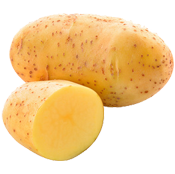THE ORIGINS OF
POTATO
In 1533, Pedro de Cieza de Leon first described the potato in his Chronicle of Peru. At that time, only the inhabitants of the Andes knew the tuber they called Daddy in Quachua.
The potato crosses the Atlantic thanks to the Conquistadors. From Spain, it gradually spread to Italy, the Pontifical States, Germany and France (around 1540, the date from which the socalled “truffole” variety was cultivated in St-Alban d’Ay. It will only be used to feed livestock for two centuries). In 1581, the first known recipe based on potatoes was German. It looks like the current rösties. Another entry into Europe: in 1586, on the return from a campaign against the Spaniards in present-day Colombia, adventurer Raleigh brought it back to England. From there, it will be
imported into North America.
In 1600, Olivier de serres described it and called it “Cartoufle” and 18 years later, the Thirty Years’ War began and pushed the populations suffering from famine to consume potatoes. It was in the 18th century that Antoine-Augustin Parmentier (an army pharmacist) highlighted the nutritional qualities of potatoes. He used it again to stop the endemic French famines and planted entire potato fields around Paris, which he had watched over only during the day. At night, the inhabitants steal the tuber and thus make a strong promotion of it. Then, Parmentier offered the royal couple a dinner during which only dishes containing potatoes were served. As a result, its presence continues to spread to Europe.
THE VARIETIES OF POTATO
Potatoes can be defined according to various varietal criteria, some of which relate to the stem, leaves or flowers, others to tubers. We will only talk here about the tubers that represent the purchased part.
- Charlotte is oblong and elongated with superficial eyes, yellow skin, yellow flesh and firm with a very fine taste.
- The Ratte is kidney-shaped, fairly regular and has rather superficial eyes. The skin is yellow with yellow flesh. It is a firm-fleshed potato with a good hazelnut taste that does not disintegrate during cooking.
- The vigorous Roseval is claviform, very regular with very superficial eyes. The skin is red and the flesh is yellow.
- The Cherie is elongated oblong, superficial eyes, red and smooth skin, pale yellow flesh.
- The BF.15 is claviform and fairly regular in shape, and the eyes are quite superficial. The skin is yellow and the flesh is dark yellow. It keeps very poorly.
- The Belle de Fontenay, which is also claviform in shape with very superficial eyes, yellow skin and firm dark yellow flesh.
- Nicola has an oblong tuber, elongated with superficial eyes, yellow skin and yellow flesh.
- Starlette, Monalisa (floury flesh), Bea (early) also have the same tuber characteristics as Nicola.
- Ostara is similar to Nicola but with short tubers. It is one of the early potatoes.
- The well-known Bintje is oblong, regular and round, with superficial eyes, skin and yellow flesh.
- Samba is characterized by a pale yellow flesh, oblong and elongated.
- Similarly, Caesar has the same characteristics but with very shallow eyes.
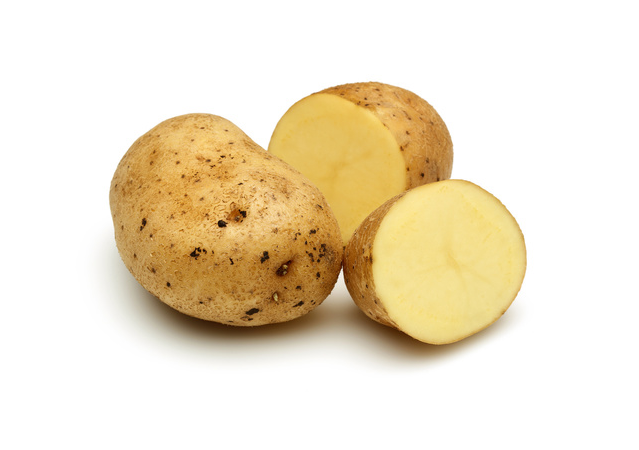
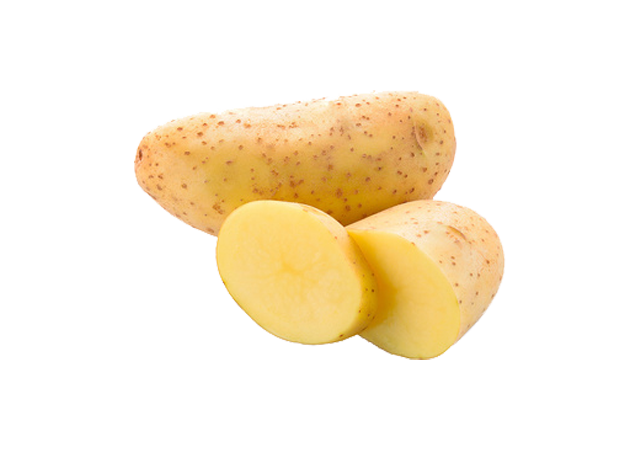
HOW TO CHOOSE POTATO
The crumpled potatoes will be left with too large eyes, the skin will be smooth and without bruising. Firm and unsprouted, avoid those that have turned green. Buy the potato variety corresponding to the use you want to make of it.
As a first, it is preferable to buy them in small quantities because they are quickly damaged. It should be noted that the early season is short.
It is necessary to count 200g per person for an accompanying use.
HOW TO STORE AND COOK POTATO
The potato will be washed in water without soaking so it will retain its mineral properties. Potatoes can be cooked in a wide variety of ways, sautéed in a pan, baked in the oven, in juice, fried or mashed.
- Braisées: Monalisa
- Frites : Bintjes, Estima, Manon.
- In the oven: Monalisa, Samba, Bintje, Estima.
- Pureed: Bintje, Estima.
- In field dress: Belle de Fontenay, Charlotte, Francine, Pompadour, Roseval, Francine.
- By steam: Belle de Fontenay, BF15; Charlotte, Francine, Nicola, Nicola, Roseline, Pompadour, Ratte, Rosa, Rosine, Samba.
- Gratins: BF15, Francine, Monalisa, Nicola, Rosine, Roseval, Samba.
- In a frying pan: ratte, pompadour, charlotte, belle de Fontenany, BF15, manon.
- In stews: Bintje, Estima, Manon, Monalisa.
- In soup: Bintje, Estima, Manon (floury).
- In salads: Belle de Fontenay, Charlotte, Francine, Pompadour, Ratte, Roseval, Rosine, Roseline.
- In canapés: Belle de Fontenay, Charlotte, Francine, Pompadour, Roseval, Ratte.
- In cakes: Belle de Fontenay, BF15, Viola.
- In papillotes: Belle de Fontenay, BF15, Charlotte, Francine, Nicola, Pompadour, Ratte, Rosine, Rosa, Samba.
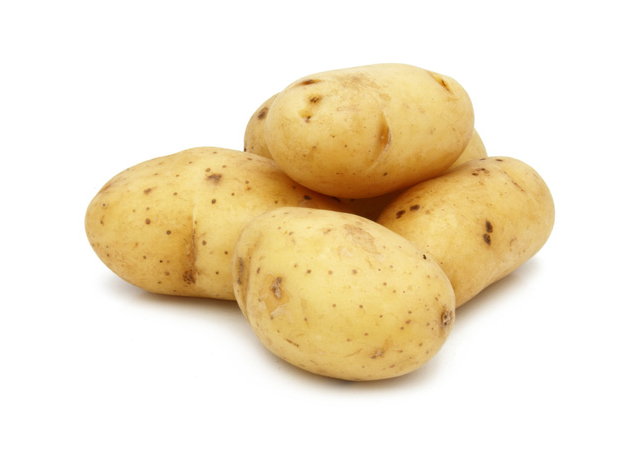
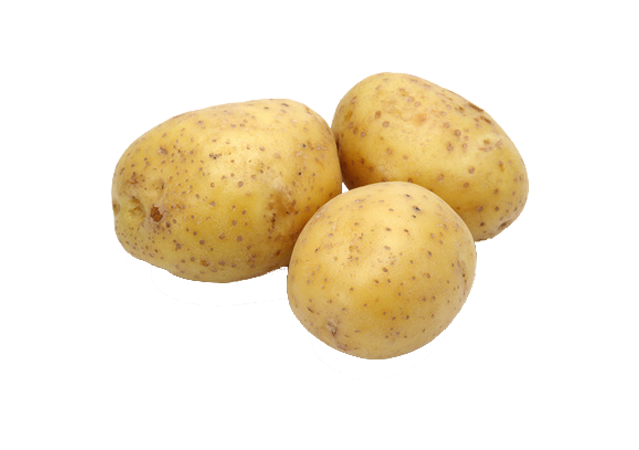
POTATO’S HEALTH PROPERTIES
The potato brings a certain balance to the diet. The absence of bread or potatoes leads to a lack of carbohydrates. The potato, with its supply of starch, magnesium and B vitamins, provides a complex that benefits both the muscles and the nervous system. The complex carbohydrates found in potatoes make it possible to avoid the stroke of the bar and thus the snacking which is really harmful.


